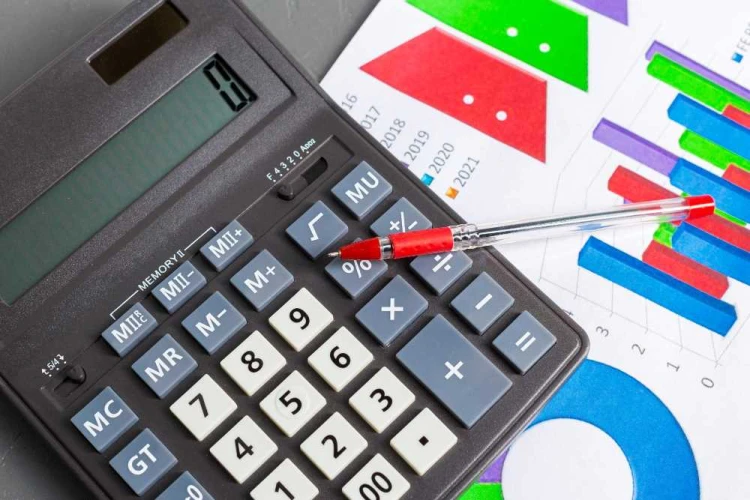Value Added Tax (VAT) in Turkey - Updates and Implementation
Legal documentsLearn about Value Added Tax (VAT) in Turkey, and the official VAT rates, and discover how to calculate and present it to consumers in our detailed article at Trustus Consultancy.

Companies constantly shed light on Value Added Tax (VAT) in Turkey when dealing with financial matters, as it is one of the key concepts in the business world.
Proper handling of VAT, abbreviated as KDV in Turkish, is essential for any company aiming for success in Turkey.
In this article, we will provide a detailed explanation of how to apply this tax. Follow along with Trustus Consultancy.
Table of contents
What is value added tax in Türkiye?
It is a tax on consumption, imposed on products and services at various stages of production and distribution by adding a small percentage determined by the state, based on the type of goods, to the product's final price. It is collected from the end consumers and transferred to the tax authorities.
How much is the value added tax in Turkey?
According to the official amendments issued on July 7, 2023, to the Value Added Tax (KDV) law in Turkey, the Turkish government has decided to increase the tax rate by two percentage points on specific specified categories.
Accordingly, the tax rate became as follows:
|
Percentage before increase |
Percentage after increase |
Category |
|
1% |
1% |
Basic goods, such as: bread and basic grains, and this category of goods has not been affected by the increase. |
|
8% |
10% |
Other essential goods, such as tissues, detergents, books, magazines, etc. |
|
18% |
20% |
A wide range of professional services and luxury goods, such as: · Furniture. · Electrical appliances. · Electronic products. · cars. |
How to calculate VAT in Türkiye
Companies should follow the following steps when calculating Value Added Tax on products and adding it to the sales invoice provided to the consumer, as follows:

1. Calculate the Base Value
At this stage, you gather the costs of raw materials, manufacturing, production, storage, distribution, and the desired profit margin for your company.
2. Calculate Value Added Tax (VAT) in Turkey
VAT is calculated based on the applicable rate for the type of product. You calculate it as follows:
VAT Amount = (Product Price × Estimated Tax Rate) / 100
For example:
If the product is furniture with a base value of 1000, and the tax rate is 20%, you calculate the VAT as follows:
(1000 × 20) / 100 = 200
So, the VAT amount is 200
If the product is cleaning supplies, for example, with a price of 200, and the tax rate is 10%, you calculate it as follows:
(200 × 10) / 100 = 20
So, the VAT amount is 20.
3. Calculating the Total Price
To determine the final product price, we add the tax value we calculated in the previous stage to the base price of the item.
Based on the previous examples, this is calculated as follows:
|
Item type |
Base price |
Tax amount |
total price |
|
Furniture |
1000 |
200 (20%) |
1200 |
|
Detergent |
100 |
10 (10%) |
110 |
That is, the price the consumer will pay = the price of the item + the amount of tax.
4. Proper Price Display
The price should be presented to customers in a way that clearly separates the base price of the item from the value-added tax (VAT) amount.
For example:
The price should appear on the customer's invoice in the following format:
|
Item price |
100 |
|
KDV value |
10 |
|
Total price |
110 |
In this way, consumers can clearly see the value of the item and the tax amount, which also contributes to highlighting the total price that must be paid.
The mechanism for collecting Value Added Tax (VAT) in Turkey - Obligations and Financial Transactions
In Turkey, commercial enterprises must adhere to specific tax procedures when generating invoices. These companies are obligated to include Value Added Tax (VAT) within the pricing of their products or services in a manner that shifts the responsibility for paying this tax to the end consumer. The company then forwards this collected VAT to the tax authorities.
It's important to note that in cases where a company acquires goods or services from other suppliers, they have the opportunity to offset the VAT amount they paid for their purchases against the VAT amount listed on their sales invoices. This practice is in place to prevent double taxation, which would otherwise impose additional financial burdens on consumers.
For instance, if a company sells products totaling 10,000, with an included VAT of 2,000, and simultaneously purchases goods worth 5,000, which include a VAT of 1,000, the amount payable to the government would be only 1,000.
Legal note
Not issuing sales invoices is considered tax evasion, as it deprives the government of its rightful tax revenue.
This can lead to legal consequences, including the imposition of fines on sellers who fail to issue the required invoices.
In conclusion
In the complex world of business, we stand by your side as consulting partners. Let us assist you in excelling by leveraging our deep understanding of Value Added Tax (VAT) laws in Turkey and their practical applications.
Join our partners who have benefited from the guidance, support, and direction we have provided, allowing you to easily meet your tax obligations while maximizing your financial opportunities.
Don't miss out on this opportunity. Contact us today and start your journey toward real success!
Edited by: Trustus Consultancy©
Source: Turkish Revenue Administration
Got a question?
We'd love to talk about how we can help you.




